Engine Build-up
The 1987 motor used in this swap was completely rebuilt By Tim at DOA Racing Engines. The motor was completely balanced and blue-printed and a number of upgrades were installed to increase power and extend engine life.
The block was magna-fluxed to check for small imperfections in the block. This insures the block is in good condition and is appropriate for rebuilding. Without this step an undetected flaw could ruin the entire rebuild. The block was then measured to verify bore size and shape. The cylinders were honed to allow the new rings to properly run-in.
The crankshaft was ground to properly phase the throughs so they are exactly 180 degrees out from each other. It was then hardened to reduce the long term effects of oil contaminates on the crank and to ensure long crank and bearing life. A DOA high volume oil pump was installed for increased oil flow. This oil pump puts out 40% more volume than a stock oil pump. This high volume pump keeps the pressure up even at low RPM's common in rock crawling.
DOA Severe Duty rings were installed around the stock pistons after measuring them to ensure they were within factory spec. These molly rings seat in about 10 minutes when the cylinder is properly honed. DOA rings are designed to provide extended life and superior cylinder sealing compared to stock rings.
The rods were resized, shot peened , to smooth surface to reduce surface stress points. Centerline measurements are taken to ensure each rod is identical in length.
Head porting is one place you can really get more power for relatively little cost. Head porting is the opening up of intake and exhaust ports in the head to increase air/fuel flow. Using precise tools Tim opens up the ports with the skill of a surgeon, removing material and reshaping the the tunnels. Flow testing is used to verify increased volume. Bronze valve guides were then installed into the heads.
These special guides dissipate heat better than other guilds and preventing burnt valves by transferring more heat away from the valves. DOA's specially designed semi stainless valves were installed into the head. These valves are especially resistant to damage from detonation common to low RPM driving that is common in rock crawling.
DOA's C270 high vacuum cam was chosen as a match for engine. This cam is designed as a performance upgrade for use with "R" series Toyota motors. This cam improves low to mid RPM torque through changes in lobe lift and duration. DOA's metal backed timing chain kit was used to connect the cam to the crank.
Toyota factory injectors can very widely in the amount of fuel they release. While it is true the O2 sensor allows the computer to see if too much or too little fuel is getting into the motor the O2 sensor can only read the average off all 4 cylinders. If the injectors are putting out different amounts of fuel some cylinders would be running richer or leaner than others. With balanced injectors each injectors is checked against the others to create a matched set. Injectors are opened up until all four injectors match to within .5%.
This balance ensures each cylinder put out the same power and runs at the same temperature as the others. It also reduces the smog output as all four cylinder can run closer to the ideal air/fuel ratio with less variation between cylinders. The injectors included new seals and insulators
EFI Conversion
The change from carburetor to EFI was at first a daunting task. I started with the rebuilt motor and a nearly complete harness from an 87 Toyota. I started by pulling out the entire 83 harness and replacing it with the 87 harness. My thought here was that it would be easier to adapt the truck to the new harness than to add wires to the old harness for EFI. I found that virtually all the connectors were different and none of the truck connectors would plug into the new harness. Also parts of the new harness were missing, including relays, and several feet of cables used to run lights and wipers. At this point I just stopped and spent several days thinking about how best to proceed. I even seriously considered getting a later model cab that was already wired for use with the EFI motor and swapping it onto my frame. After much thought and hours of looking at the wiring diagrams of both the 87 and 83 trucks I chose to run both harnesses at the same time. I pulled out the 87 harness and reinstalled the 83 harness. I hooked everything back up to the harness and all the truck accessories worked again. Then I ran the 87 harness around the outside of the truck. The harness started on the driver side and ran over the fender and into the cab. It run across the floor of the cab and went out the passenger door and up over the fender and into the engine bay. It was a very odd looking setup.
Looking at the factory service manual I could see that only about 25% of the 87 harness wiring was for the engine. I started by unwrapping the 87 harness so that each wire could be traced out. I removed most of the non engine wiring from it and it's fuse box. I then purchased a small fuse box to supply power to the the engine. This is one of two places the two harnesses come together. Power from the ignition switch on the 83 harness was connected to the common connection on the new fuel box.
The outputs of the fues box were run through the 87 harness to the EFI computer, air flow meter, coil, ignighters and fuel pump. The start wire from the ignition switch was the second wire to cross over from the 83 harness to the 87 harness. The 87 harness then supplied power to the starter. Now the old 83 computer was removed as was some of the engine related wiring on the 83 harness.
Using a jumper wire from power to the fuel pump I primed the fuel system by running the fuel pump for about 10 minutes. The EFI fuel pump is located inside the previously mounted EFI 86 4Runner fuel tank. The EFI pump runs at about 50 pounds. Once this pressure is achieved the fuel rail releases the excess fuel back to the bottom of the fuel tank right next to the pickup. The 86 tank was chosen because it's a little larger (17 gallons) then the stock size and has the needed built in high pressure fuel pump and baffles. This was mounted above the rear drive shaft between the frame rails to prevent trail damage that often occurs to tanks mounted in the stock location under the truck.
Brake-in & Overall Results
Every one has a different idea on how to brake in a motor. I have heard some wild ideas over the years on how to brake in a motor to get the most life out of it. Personally I think what ultimately determines the lift of the motor is how it was built, how it is driven and how it is maintained. After start up the motor was allowed to idle for 20 minutes. During the first 100 miles I drove slowly and used as little throttle as possible. Then at 100 miles I changed the oil. Since then I have driven the truck normally and have over 500 miles on the motor.
Overall the performance of the motor has been outstanding. Fuel mileage is wonderful at 20 MPG on the highway and 17 MPG around town. That is great mileage for a truck with 35" Swampers and a 6" lift on it. The motor is far more powerful then the tired old carburetor motor it replaced. Cruising at 70 MPH on the freeway is easy at about half throttle and the motor easily pulls most small hills in 5th gear. The truck is a pleasure to drive on the highway and has all the power I will need for rock crawling.
More Project Trail Toy build up info next month!


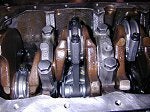
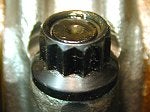
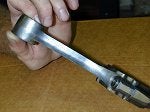
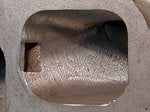

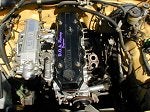
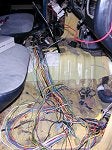
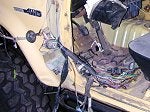


 Your Privacy Choices
Your Privacy Choices